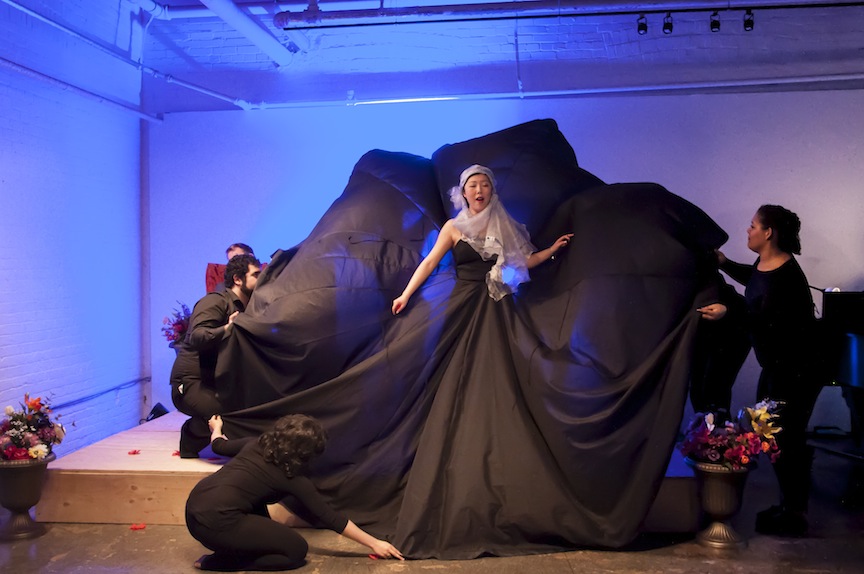
It’s fascinating to watch a fledgling opera company cross the line from cheap and cheerful to unfocused and messy before finding the essence of what makes a performance captivating — all in less than two hours.
- Classical Music 101: What Does A Conductor Do? - June 17, 2019
- Classical Music 101 | What Does Period Instrument Mean? - May 6, 2019
- CLASSICAL MUSIC 101 | What Does It Mean To Be In Tune? - April 23, 2019
Opera 5, a group of young professionals with interesting ideas, close their first, three-production season with rare (for Toronto) Spanish-language one-act operas — El retablo de maese Pedro by Manuel de Falla and Goyescas by Enrique Granados — at Parkdale’s intimate Gallery 345.
The relatively small space comfortably accommodates 50 to 60 seated people in front of a tiny, temporary stage, very basic lighting, a concert grand piano and room to drink a cocktail or two. There are no allowances for error, because every note and every gesture is right there.
It made for a powerful, two-way connection between performer and audience at the first performance on Monday night.
Both operas were directed by Aria Umezawa, who has a taste for whimsical gestures.
El retablo de maese Pedro, a half-hour scene from Miguel de Cervantes’ epic Don Quixote, was conceived as a puppet opera in 1919. Umezawa decided to present it with humans and shadow puppets, playing up the cheap-and-cheerful aspect with childlike things like hats made of folded newspaper and a puppet theatre consisting of hung sheets.
The piece isn’t a true opera, short or long, because the narrator presents most of the story in recitative style, while the puppets perform to instrumental music. Instead of an orchestra, Opera 5 accompaniment is capably filled by music director Maika’i Nash at the piano.
Goyescas, which is twice as long and had as many as 12 people on stage at one time, is a much more ambitious and difficult piece of work, premiered by the Metropolitan Opera in 1916.
The plot is as simple as they come, as two men battle each other for possession of a female heart. But capturing the mix of Spanish verve embedded in Granados’s rich music and figuring out how to move people around on a stage that realistically should hold no more than a quartet proved to be a bit much.
The singing as well as the stage movement threatened to turn into chaos several times — but then the focus tightened in the last of the three scenes, as the character of Rosario sang the Song of the Nightingale. With just her and, a bit later, Fernando on stage alone, everything gelled beautifully.
Soprano Emily Ding and tenor Conrad Siebert deserve full credit for carrying off this scene with touching poise, completely capturing the moment — and pretty much cancelling out the mess of the previous two tableaux.
The talented and eager people behind Opera 5 have achieved a lot, but still have much to perfect. They have announced a three-production 2013-14 season that explores other venues, and more little-performed works. It remains a promising recipe for some exciting operatic experiences outside the mainstream.
Performances of the two Spanish operas continue on Wednesday and Thursday at Gallery 345. You’ll find the details here.
+++
I couldn’t help thinking of the late pianist Alicia de Larrocha’s wonderfully rich interpretations of the Goyescas (a rare case where the solo-piano music preceded the opera). Here she is playing what became the Song of the Nightingale in the opera:
John Terauds
- Classical Music 101: What Does A Conductor Do? - June 17, 2019
- Classical Music 101 | What Does Period Instrument Mean? - May 6, 2019
- CLASSICAL MUSIC 101 | What Does It Mean To Be In Tune? - April 23, 2019



